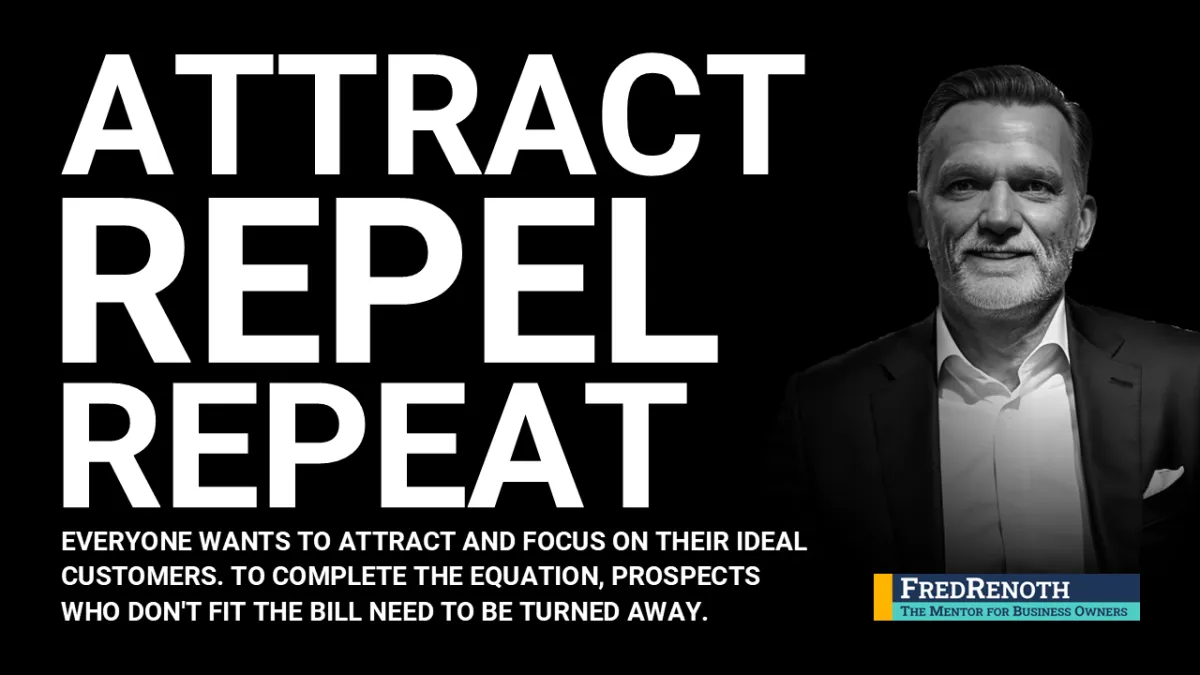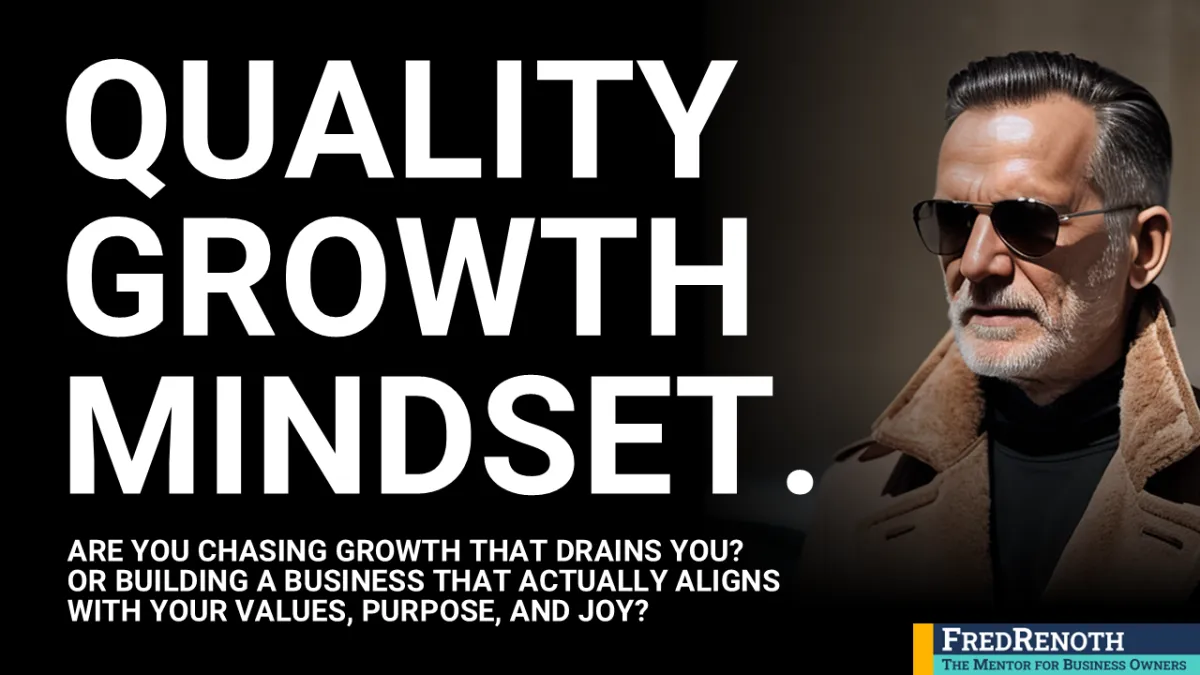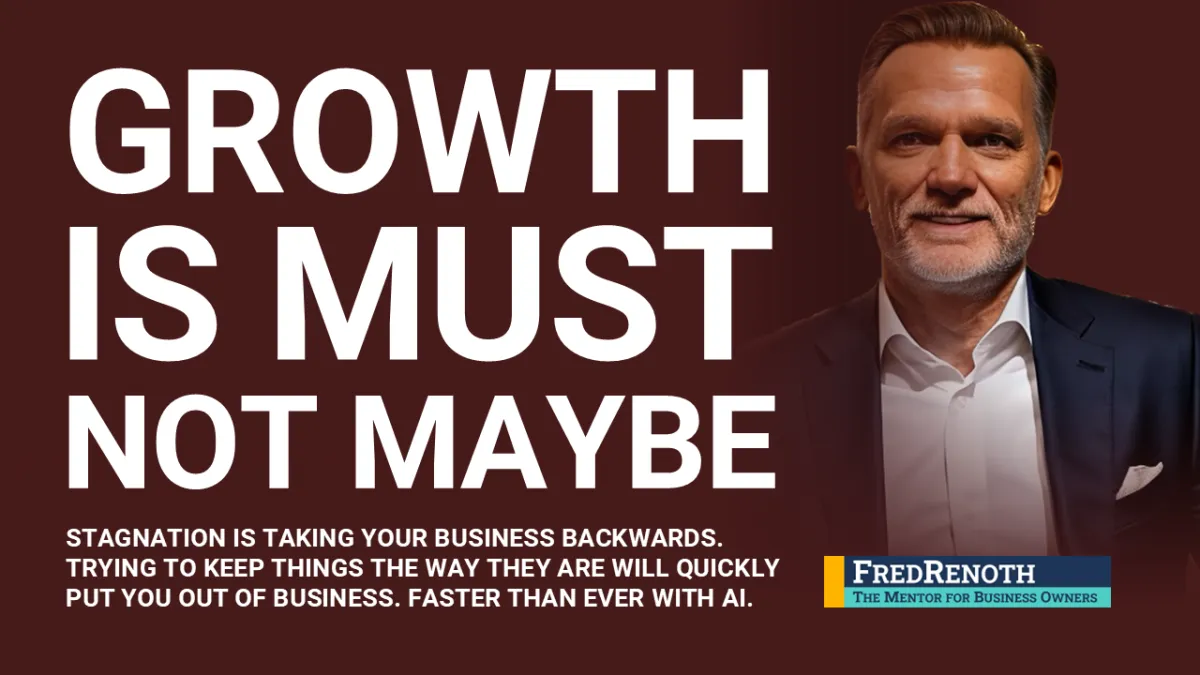


Welcome to Fred's
the Healthy Business BLOG

Not Every Customer Fits: Mastering the Art of Attraction and Repulsion
Every business dreams of working with its ideal customers-those who truly "get" your brand, value your product or service, and remain loyal over time. It sounds simple: define your audience, identify their problems, and show how your solution is the perfect fit. But here's where most people miss the mark: It's not enough to focus on attracting the right customers. The real secret to success is that you also need to turn away the wrong ones.
And why is that? Because working with the wrong customers is not only frustrating, it's expensive. They drain your time, energy, and resources. Worse, they can damage your reputation when their needs aren't met because you weren't the right fit in the first place. In a world where reviews spread like wildfire, no company can afford to make the wrong impression. The solution lies in mastering the "attract, repel, repeat" cycle.
Attracting the right people and repelling the wrong ones isn't just about efficiency-it's about protecting the heart of your business. By focusing on serving those who align with your values and offerings, you can create better experiences, stronger relationships, and a reputation that brings even more of your ideal customers to your door.
What is “Attract, Repel, Repeat”?
This isn't a new marketing trend-it's a mindset shift. At its core, it's about clarity. The better you understand who your ideal customer is, the easier it is to craft messages that attract them. At the same time, it's about having the courage to say, "We're not for everyone," and making sure that people who don't align with your brand's values or solutions know that up front. It's not exclusionary - it's effective.
Consider this: If you walked into a restaurant and saw "fine dining" on the sign, you wouldn't expect a fast-food menu. If that same restaurant served burgers and fries instead of gourmet meals, you'd feel misled. Businesses thrive when they set clear expectations that attract the right customers and keep the wrong ones away. That's the essence of attract, repel, repeat.
How can you Put this into Practice?
First, take a step back and define your ideal customer. This goes beyond age, gender, or income levels. Ask yourself: What do they value? What specific problem do they need solved? What kind of experience are they looking for? The more you know about your ideal customer, the easier it will be to tailor your brand and marketing to their needs.
Second, be clear about who you're not for. Many companies dread this step. They think that saying "no" to certain customers will limit their growth. But the opposite is true. Being transparent about your limitations will save you time and ensure that your offerings go to the right people. When you confidently say, "This is who we help-and this is who we don't help," you become magnetic to those who truly need what you offer.
Third, make it a habit. Attracting and repelling isn't something you do once; it's an ongoing process that touches every part of your business. From your website copy to your social media posts to your sales calls, everything should reinforce who you're for and who you're not.
Why Repelling is Just as Important as Attracting
Think of your company as a magnet. A magnet doesn't just attract-it also repels. It's not a flaw; it's physics. The same principle applies to your marketing. By pushing away customers who aren't right for you, you free up space and energy to focus on those who are.
Imagine a personal trainer who specializes in helping women build strength and confidence. Her messaging focuses on empowering women through weightlifting, emphasizing the benefits of building muscle, improving posture and boosting self-esteem. Now imagine that she starts taking on clients who want to train for marathons or lose weight through cardio-heavy routines. Not only would she struggle to meet their needs, but her ideal clients-women looking for strength training-might feel neglected.
This is the power of rejection. By clearly stating that she specializes in weightlifting for women, she attracts those who align with her expertise and repels those who don't. It's not about pushing people away-it's about making room for the right ones.
Examples of Attract and Repel in Action
A luxury interior design firm positions itself as the go-to solution for high-end clients who want customized, one-of-a-kind spaces. Its website features sleek, minimalist designs, testimonials from high-profile clients, and a tagline that reads, "Timeless elegance, designed just for you. While this messaging attracts affluent homeowners, it also signals to budget-conscious buyers that this service may not meet their needs.
On the other hand, a local coffee shop focuses on creating a community-oriented space. Their social media showcases events like open mic nights, trivia contests, and collaborations with local artists. Their branding makes it clear that this is not a place for people looking for quiet, corporate coffee shop vibes-it's for those who love vibrant, creative energy.
Both examples show how businesses can attract and repel at the same time. It's about owning your niche and being unapologetically specific about who you want to serve.
What Happens when you Don’t Repel?
Failing to turn away the wrong customers often leads to chaos. You may end up bending your offerings to meet their needs, diluting your brand and confusing your messaging. Worse, you risk alienating your ideal customers, who no longer feel like you're speaking directly to them.
Let's take a software company as an example. If their product is designed for startups, but they also try to cater to large enterprises, they risk overcomplicating their software. This alienates their core audience of small business owners who value simplicity. The result? Frustrated customers on both sides.
This is why clarity is so important. When you're clear about who you're for-and who you're not-you protect the integrity of your brand, create better experiences, and build long-term loyalty.
How to Start Attracting and Repelling Today.
Start by revisiting your customer persona. Go beyond demographics and delve into psychographics - what motivates them, what they care about, and what they want to achieve. Then craft your messaging to align with these insights.
Next, be honest about your limitations. If your service isn't designed for a particular group or situation, say so up front. This not only saves time, but also builds trust. Prospects will appreciate your honesty and see you as a values-driven company.
Finally, test and refine your approach. Attract and repel isn't a set-it-and-forget-it strategy. Pay attention to who's coming into your pipeline, who's leaving, and why. Use this data to refine your messaging over time.
The Ripple Effects of Attract, Repel, Repeat
When you embrace the attract, repel, repeat strategy, you’ll notice immediate benefits. Your sales process becomes smoother because you’re only engaging with customers who are a genuine fit. Your marketing becomes more effective because it’s laser-focused on your ideal audience. And your reputation grows because you’re known for delivering exceptional results to the right people.
It’s not just about growing your business—it’s about growing it in the right direction.
The Five-Step Action Plan
To help you with an actionable takeaway, consider my suggestion for immediate action. Consider working through the steps one at a time.
Define your ideal client and their needs.
Create messaging that speaks directly to their pain points and aspirations.
Be transparent about who you're not a good fit for and communicate that clearly in your branding.
Consistently reinforce your positioning across all touch points, from your website to your sales process.
Continually review and adjust your approach based on customer feedback and results.
In Conclusion, Clarity is Everything
Mastering the art of attract, repel, repeat is about more than just growing your business-it's about doing it with purpose, intention and focus. By being crystal clear about who you're for and who you're not, you'll attract the customers who truly need what you offer, while avoiding the ones who don't.
This isn't about limiting your potential - it's about unlocking it. When you focus your energy on serving the right customers, you create a business that thrives on trust, loyalty, and shared values. So take the leap. Start attracting, repelling, and repeating - and watch your business transform.
Want to Take it a Step Further?
Enjoyed this article?
It may give you a taste of what we talk about with our clients in the FredRenoth Mentoring Program.
Check out our website (CLICK HERE FOR WEBSITE).
And, of course, I'm ready to answer all your questions in a Value Call. Just click the button below.
Copyright 2025 Sysbizz LLC - All Rights Reserved
















